Ive got a 3b and im out for 7-8 weeks…… We hear this all the time but what do these numbers and letters mean?!
We wanted to bring you this post as we approach club championship 2025 in GAA. Already in the intercounty season the team you support has probably lost at least one player to a hamstring injury in 2025!!!
Hamstring injuries are one of the most common soft tissue injuries in Gaelic Football and Hurling, particularly as players build towards peak competition. However, not all hamstring injuries are the same — and understanding the exact type of injury is crucial for recovery, safe return to play, and avoiding re-injury.
At SPARC, we use the BAMIC system (British Athletics Muscle Injury Classification) to accurately diagnose hamstring injuries based on both location and severity. This allows us to build more precise rehab plans that target the injured tissue, not just the general area.
Understanding BAMIC Classification
The BAMIC system classifies hamstring injuries in two ways:
1️⃣ Location: Where is the tear?
A (Myofascial injuries):
The tear is located in the muscle belly or surrounding fascia — the outer soft tissue layer of the muscle.B (Musculotendinous junction injuries):
The tear occurs where the muscle fibres blend into the tendon — known as the musculotendinous junction (MTJ). This is a very common location for hamstring injuries.C (Intratendinous injuries):
The tear involves the tendon itself — either inside the tendon or near where the tendon attaches to the bone. Intratendinous injuries heal more slowly and carry a higher risk of recurrence if not fully rehabilitated.
2️⃣ Severity: How big is the tear?
Grade 0: Pain on sprinting or loading but no visible tear on imaging
Grade 1: Small tear — only a few muscle fibres involved
Grade 2: Moderate tear — larger portion of fibres affected
Grade 3: Extensive tear — significant muscle or tendon damage
Grade 4: Complete rupture — full separation of the muscle or tendon
Recovery Timeframes Based on Injury Type
The combination of location and severity determines the likely time away from play. In simple terms: the more severe the tear and the closer it is to the tendon, the longer the recovery.
Time out increases with both severity and tendon involvement and there is no one right answer on length of time out. What an athlete does in their rehab will definitely influence time out of play and risk of recurrence. Even within different grades of injury, there are multifactoral reasons for why two injuries that appear the same on a report differ in reality. What we do no, is that a criteria based return to play is key to a succesful return and minimising recurrnece.
Research by Pollock et al. (2016) has shown that C-type (intratenindous) injuries not only take longer to heal, but have significantly higher recurrence rates if not fully rehabilitated.
Why Targeted Hamstring Rehab Matters
One of the most common mistakes in hamstring rehab is failing to specifically load the injured area. Simply strengthening "the hamstrings" is not enough. The exact muscle (such as biceps femoris long head or semimembranosus) and the part of the tissue that was injured (muscle belly vs tendon) needs to be directly targeted to ensure full tissue healing and load tolerance.
At SPARC, we ensure that your rehab includes:
Specific muscle loading targeting the exact site of injury
Isometric, eccentric, and concentric strength exercises across full range of movement
Progressive lengthening work to restore tissue capacity at longer muscle lengths
Return-to-sprint protocols to gradually build high-speed running volume
Change of direction, curved running, and deceleration drills to fully prepare for GAA match demands
Avoiding Recurrence: The Long Game
Hamstring injuries have one of the highest recurrence rates in sport — especially if rehab is rushed. This is particularly true for tendon-based (C-type) injuries, which often feel better before they are truly healed. Rushing back to play too early dramatically increases the risk of re-injury during sprinting or match play.
Our rehab approach at SPARC is built on evidence-based loading, sport-specific progressions, and objective testing to ensure your hamstring is not only pain-free — but fully ready for the demands of championship football and hurling.
So if you end up with a hamstring injury this summer, make sure your diagnosis is accurate, your rehab is specific and you hit targets right through your rehab. Know your risk reward on return to play!
👉 If you’ve suffered a hamstring injury, don’t leave your recovery to chance. Contact SPARC Sports Physiotherapy & Athletic Rehab Clinic today to book a full assessment and build your personalised return-to-play plan.

